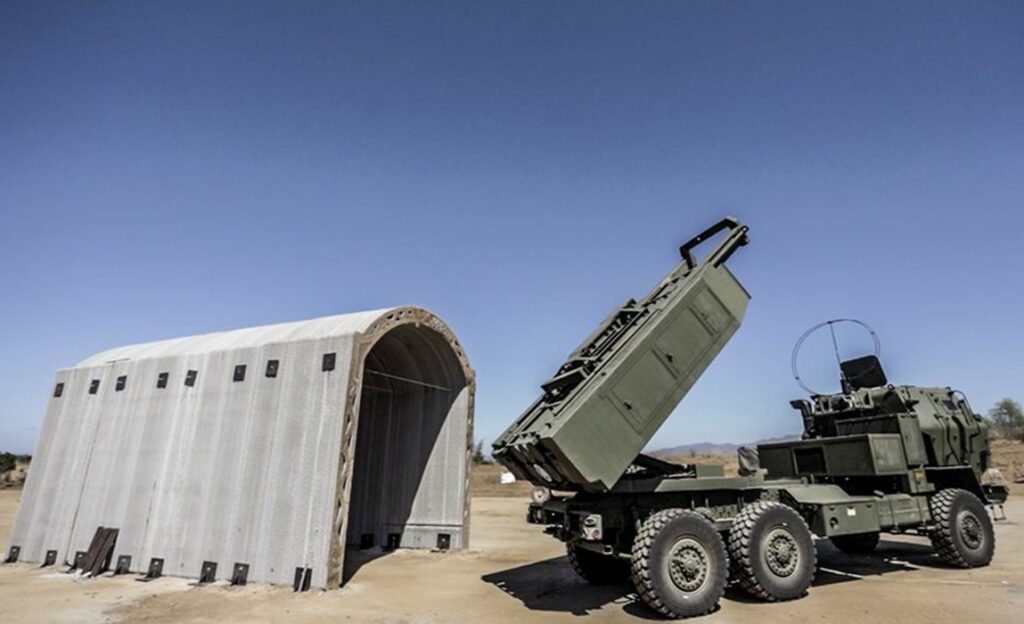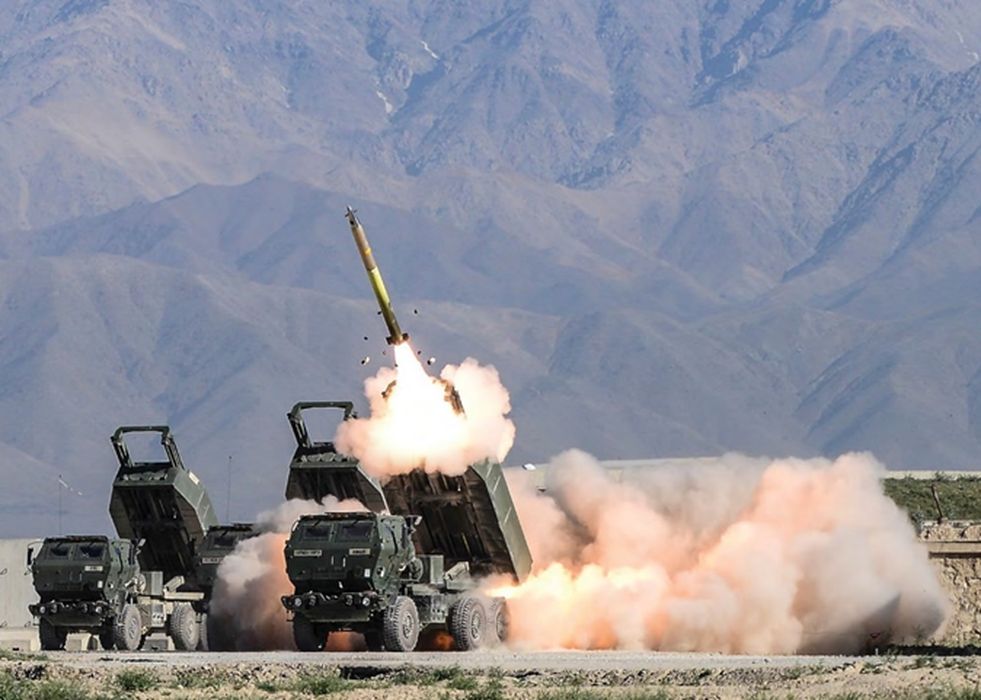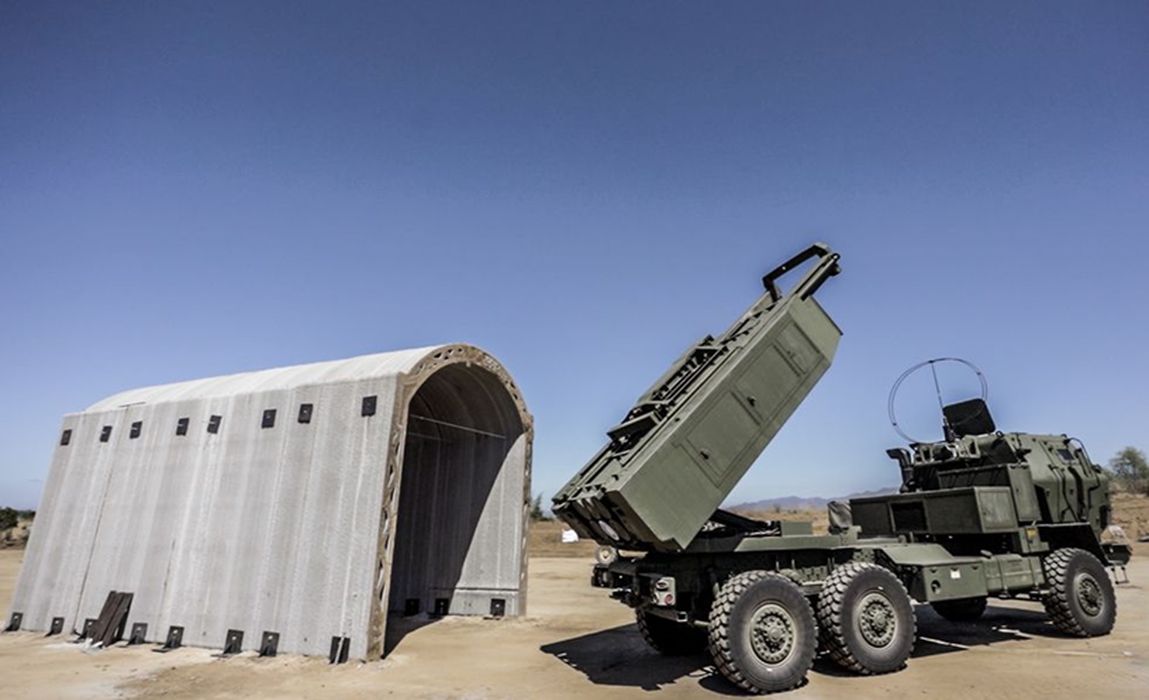
Charles R. Goulding and Preeti Sulibhavi look at how 3D printing has been used to assist in field deployments of the now-famous HIMARS system.
Lockheed-made, MI42 High Mobility Rocket Systems (HIMARS) are one of the products supplied by the U.S. to Ukraine that is proving very effective.
In a relatively short period, over 100 key Russian targets have been destroyed. The high-value targets destroyed include ammunition depots, long-range artillery positions, command posts, air-defense sites and radar communications nodes.

ICON a leading 3D printing, concrete printer manufacturer has been able to utilize its Vulcan printer to quickly create a concrete HIMARS battlefield enclosure. The Vulcan weighs 3,800 pounds and is designed to apply layers of proprietary Lavacrete, a fast-curing polymer concrete that is ready to use in as little as 12 to 24 hours after 3D printing. This is optimal for extreme conditions and is in line with the Marine Corps’ new, leaner and more efficient strategy.
In a demonstration, U.S. Marines were able to create a protective enclosure in the field for the HIMARS rocket within 36 hours. Each HIMARS costs over US$5M dollars so protecting them is cost-effective and increases their life cycle. We have previously covered ExOne’s design for a complete containerized 3D printing field unit for the U.S. Army. This turn of events only bolsters the importance of 3D printing in our nation’s defense strategy.
The Research & Development Tax Credit
The now permanent Research and Development (R&D) Tax Credit is available for companies developing new or improved products, processes and/or software.
3D printing can help boost a company’s R&D Tax Credits. Wages for technical employees creating, testing and revising 3D printed prototypes can be included as a percentage of eligible time spent for the R&D Tax Credit. Similarly, when used as a method of improving a process, time spent integrating 3D printing hardware and software counts as an eligible activity. Lastly, when used for modeling and preproduction, the costs of filaments consumed during the development process may also be recovered.
Whether it is used for creating and testing prototypes or for final production, 3D printing is a great indicator that R&D Credit eligible activities are taking place. Companies implementing this technology at any point should consider taking advantage of R&D Tax Credits.
Conclusion
The U.S. military is making increasing use of 3D printing for field operations. After leaving the military, our service personnel will be familiar with 3D printing technology and more likely make use of it in commercial applications.

